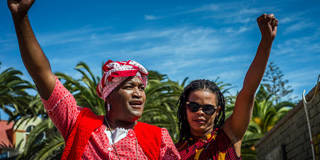Learning from Namibia
Sandwiched between Angola and South Africa, Namibia shows that even countries that start with serious disadvantages – extremes of racism, colonialism, inequality, and underdevelopment – can chart a path toward shared prosperity. Its achievement deserves international recognition – and emulation.

WINDHOEK – Sandwiched between Angola and South Africa, Namibia suffered mightily during the long struggle against apartheid. Yet, since winning independence from South Africa in 1990, this country of 2.4 million people has achieved enormous gains, especially in the last couple of years.